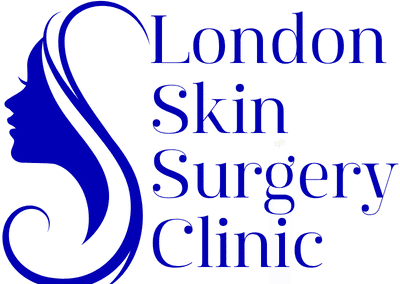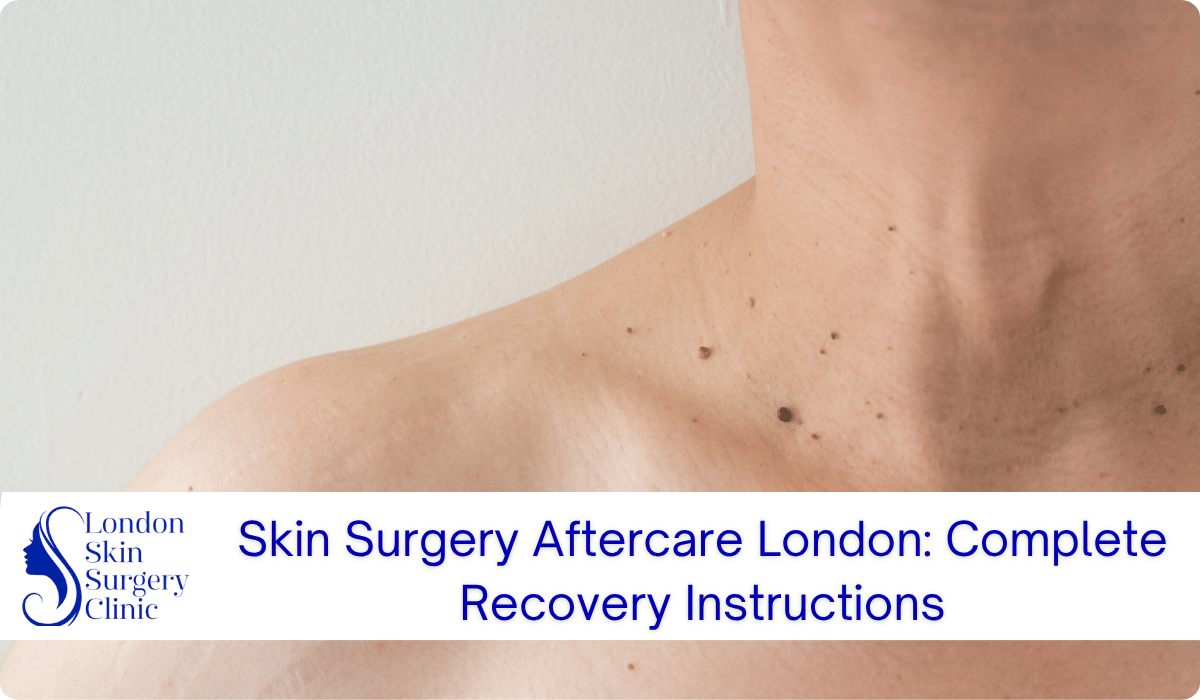Successful Skin Surgery Recovery
- First 48 Hours: Keep original dressing intact for 24 hours, use cold compresses for swelling, and prioritize rest with the treated area elevated.
- Wound Care: Practice thorough hand hygiene before dressing changes, clean with saline or mild soap as directed, and maintain a moist healing environment.
- Infection Prevention: Watch for increasing pain, excessive redness, unusual discharge, or fever, and contact your specialist immediately if these occur.
- Scar Management: Use silicone-based products consistently, practice gentle massage once healed, and apply sunscreen daily to prevent hyperpigmentation.
- Activity Restrictions: Avoid strenuous exercise for at least one week, keep the wound dry for 24-48 hours, and postpone swimming until completely healed.
- Long-term Care: Commit to daily sun protection, maintain a gentle skincare routine, and attend all follow-up appointments to monitor healing progress.
Table of Contents
- Essential Skin Surgery Aftercare: First 48 Hours Guide
- Wound Care Techniques for Optimal Healing Results
- How to Recognize and Prevent Post-Surgical Infections
- Scar Management Strategies After Dermatological Surgery
- Activity Restrictions: What to Avoid During Recovery
- When to Contact Your London Skin Surgery Specialist
- Long-Term Aftercare: Protecting Your Surgical Results
Essential Skin Surgery Aftercare: First 48 Hours Guide
The first 48 hours following skin surgery are crucial for proper healing and optimal cosmetic results. Proper skin surgery aftercare begins immediately after your procedure at our London clinic. During this critical period, your surgical site requires specific attention to prevent complications and promote healing.
Keep the original dressing in place for the first 24 hours unless advised otherwise by your surgeon. This initial protection helps stabilise the wound and prevents contamination. After this period, you may need to change the dressing according to your specific post-operative wound care instructions.
Mild discomfort is normal following dermatological procedures. Take prescribed pain medication or recommended over-the-counter options as directed. Applying cold compresses intermittently (20 minutes on, 20 minutes off) can help reduce swelling and discomfort, particularly after procedures on the face or around the eyes.
Rest is essential during the first 48 hours. Elevate the treated area when possible to minimise swelling. For facial procedures, sleeping with your head elevated on extra pillows can significantly reduce morning swelling. Avoid strenuous activities that might increase blood pressure and potentially cause bleeding at the surgical site.
Stay hydrated and maintain a nutritious diet rich in protein, vitamins, and minerals to support your body’s natural healing mechanisms. Avoid alcohol consumption during this period as it can increase bleeding risk and impair healing.
Wound Care Techniques for Optimal Healing Results
Proper wound care techniques are fundamental to achieving optimal healing results after skin surgery. Following your procedure at our London dermatology clinic, you’ll receive specific instructions tailored to your particular surgery, but several universal principles apply to most post-operative wound care regimens.
When changing dressings, always wash your hands thoroughly before and after handling the wound area. Gently clean the surgical site as directed—typically using sterile saline solution or mild soap and water. Pat the area dry with clean gauze or a fresh paper towel rather than rubbing, which could disrupt delicate healing tissue.
Apply any prescribed topical medications exactly as directed. These might include antibiotic ointments to prevent infection or specialised products to optimise healing. When reapplying dressings, ensure they’re secure but not overly tight, as proper circulation is essential for healing.
Surgical wound healing phases progress from initial inflammation through proliferation (when new tissue forms) to maturation. Each phase requires specific care approaches. During early healing, keeping the wound environment moist but not wet promotes cellular migration and prevents scab formation that can lead to more noticeable scarring.
For sutured wounds, keep the area clean and protected until suture removal. Non-dissolvable stitches typically require removal within 5-14 days, depending on the location and type of procedure. Our skin surgery specialists will schedule your follow-up appointment at the optimal time for suture removal to minimise scarring.
As healing progresses, you may transition from full dressings to adhesive strips or lighter coverings. Continue to protect the healing site from direct sunlight, which can cause hyperpigmentation and more visible scarring.
How to Recognize and Prevent Post-Surgical Infections
Infection prevention is a critical aspect of skin surgery aftercare. While our London clinic maintains the highest standards of sterility during procedures, proper home care is essential to minimise infection risks. Understanding both preventative measures and early warning signs ensures prompt intervention if complications arise.
To prevent infections, maintain scrupulous hand hygiene before touching your surgical site or changing dressings. Keep the area clean according to your surgeon’s specific instructions, typically using mild soap and water or sterile saline solution. Avoid swimming pools, hot tubs, and natural bodies of water until your wound is fully healed, as these environments harbour bacteria that could cause infection.
Apply any prescribed antibiotic ointments as directed. These create a protective barrier while delivering antimicrobial agents directly to the wound site. Keep pets away from your healing wound, as animal fur can carry bacteria and other contaminants that increase infection risk.
Be vigilant for signs of infection, which typically appear 2-7 days after surgery. These include increasing rather than decreasing pain, excessive redness extending beyond the immediate wound area, warmth radiating from the surgical site, unusual or foul-smelling discharge, and fever above 38°C. Swelling that worsens after 48 hours rather than gradually improving may also indicate infection.
If you notice any potential infection indicators, contact our clinic immediately. Early intervention with appropriate antibiotics can prevent minor infections from developing into serious complications. Never ignore symptoms hoping they’ll resolve on their own, as untreated infections can lead to more extensive scarring and potentially systemic illness.
Remember that some mild redness, swelling, and clear or slightly blood-tinged discharge are normal parts of the healing process and don’t necessarily indicate infection. However, when in doubt, it’s always better to consult with your surgical team.
Scar Management Strategies After Dermatological Surgery
Effective scar management begins immediately after your skin surgery and continues for months as your skin heals and remodels. While some degree of scarring is inevitable with any surgical procedure, our London dermatology specialists employ techniques that minimise visible scarring, and proper aftercare can significantly improve final cosmetic outcomes.
During the initial healing phase, keeping the wound moist with appropriate dressings or ointments prevents scab formation. Scabs can pull at wound edges and lead to wider, more noticeable scars. Once your surgeon advises that external healing is complete (typically 1-2 weeks post-procedure), you can begin more active scar management strategies.
Silicone-based products are the gold standard for non-invasive scar management. Available as sheets, gels, or tapes, silicone creates an optimal environment for scar remodelling by maintaining hydration and reducing collagen production. For best results, apply silicone products consistently for at least 12 hours daily for 2-3 months.
Gentle massage of the healed scar can help break down excessive scar tissue and improve appearance. Using circular motions with your fingertips or a soft massage tool for 3-5 minutes twice daily can increase flexibility and reduce the raised appearance of scars. Always use a lubricant such as petroleum jelly or a fragrance-free moisturiser when massaging to prevent irritation.
Sun protection is absolutely essential for optimal scar healing. New scars are highly susceptible to UV damage, which can cause permanent darkening (hyperpigmentation). Apply broad-spectrum SPF 30+ sunscreen to healed scars daily, even on cloudy days, and consider physical coverage with clothing when possible.
For scars that remain problematic despite proper care, our clinic offers advanced treatments including steroid injections for raised scars, laser therapy for redness or texture irregularities, and microneedling to stimulate collagen remodelling. These interventions are typically considered after the scar has fully matured, approximately 6-12 months post-surgery.
Activity Restrictions: What to Avoid During Recovery
Following skin surgery, temporary activity restrictions are necessary to protect your surgical site and optimise healing outcomes. Understanding what to avoid and for how long helps prevent complications and supports your recovery timeline after procedures at our London dermatology clinic.
For the first 24-48 hours, minimise all physical activity beyond gentle walking. Avoid bending, lifting, or straining, which can increase blood pressure and potentially cause bleeding at the surgical site. Keep the treatment area elevated when possible to reduce swelling—for facial procedures, sleep with your head propped on extra pillows.
Showering requires special consideration after skin surgery. Follow your surgeon’s specific guidance, but generally, you should keep the wound completely dry for the first 24-48 hours. When showering is permitted, avoid direct water pressure on the surgical site and pat the area dry rather than rubbing. Baths, swimming pools, hot tubs, and saunas should be avoided until your wound is completely healed, typically 2-3 weeks post-procedure.
Exercise restrictions vary based on procedure complexity and location. Light activities like walking can usually resume after 48 hours, but more vigorous exercise should be postponed for at least one week. Activities that stretch or put tension on the surgical site require longer restrictions—your surgeon will provide specific guidance based on your procedure and healing progress.
Avoid alcohol consumption for at least 48 hours after surgery, as it dilates blood vessels and can increase bleeding risk. Smoking significantly impairs healing and should be avoided entirely during recovery—ideally, use your surgery as motivation to quit permanently, as smoking accelerates skin ageing and increases future skin cancer risks.
For facial procedures, makeup application should be postponed until your surgeon confirms the wound is sufficiently healed, typically 7-14 days post-surgery. When resuming makeup use, choose hypoallergenic products and apply gently, avoiding direct contact with any remaining scabs or tender areas.
When to Contact Your London Skin Surgery Specialist
While most skin surgery recoveries proceed without complications, knowing when to contact your London skin surgery specialist is essential for addressing potential issues promptly. Our clinic provides comprehensive aftercare support, but certain symptoms warrant immediate attention rather than waiting for scheduled follow-up appointments.
Contact our clinic immediately if you experience bleeding that doesn’t stop after applying gentle pressure for 15 minutes. While some minor oozing is normal in the first 24-48 hours, active bleeding that soaks through dressings requires professional evaluation. Similarly, if your surgical site suddenly becomes painful after a period of improvement, this could indicate infection or other complications requiring assessment.
Signs of infection necessitate prompt contact with our team. These include increasing redness extending beyond the immediate surgical area, unusual warmth radiating from the wound, yellow or green discharge, foul odour, or fever above 38°C. Early intervention for infections can prevent more serious complications and preserve cosmetic outcomes.
Unexpected wound opening (dehiscence) requires immediate attention. If your sutures come apart or the wound edges separate, contact us right away. Protect the open area with a clean dressing until you receive professional care. Similarly, if you notice excessive swelling that continues to worsen after 48-72 hours rather than gradually improving, this warrants clinical evaluation.
Allergic reactions to dressings, adhesives, or prescribed medications can occur and should be reported promptly. Symptoms might include intense itching, rash, hives, or difficulty breathing. In case of severe allergic reactions affecting breathing or causing significant facial swelling, seek emergency care immediately.
Our private clinic follow-up protocols include scheduled appointments to monitor your healing progress, but we encourage patients to contact us between appointments if they have concerns. When in doubt about any aspect of your recovery, it’s always better to reach out rather than wait, as early intervention typically leads to better outcomes.
Long-Term Aftercare: Protecting Your Surgical Results
Long-term aftercare is essential for maintaining optimal results following skin surgery. While the immediate post-operative period focuses on wound healing, long-term care strategies protect your skin and preserve the aesthetic outcomes of your procedure at our London dermatology clinic.
Sun protection becomes a lifelong commitment after skin surgery. UV exposure can darken scars (hyperpigmentation) and break down collagen, potentially widening or making scars more noticeable. Apply broad-spectrum SPF 50+ sunscreen daily to the treated area, even on cloudy days and during winter months. For optimal protection, reapply every two hours when outdoors and consider physical barriers like hats, sunglasses, and UPF-rated clothing.
Maintain a consistent skincare routine using gentle, non-irritating products. Harsh exfoliants, alcohol-based toners, and fragranced products can irritate healing skin and potentially worsen scarring. Instead, focus on gentle cleansing and adequate moisturisation. For facial procedures, consider incorporating products with evidence-based ingredients like vitamin C, niacinamide, and peptides to support skin health and resilience.
Nutrition plays a significant role in long-term skin health and healing optimization techniques. A diet rich in antioxidants, essential fatty acids, and protein provides your skin with the building blocks needed for ongoing repair and maintenance. Stay well-hydrated and consider supplements like vitamin C, zinc, and omega-3 fatty acids if recommended by your healthcare provider.
Regular follow-up appointments allow your surgeon to monitor long-term healing and address any concerns promptly. Even after your surgical site appears fully healed, internal remodelling continues for up to 12-18 months. During this time, your scar may change in appearance, sometimes becoming more noticeable before improving. Professional assessment helps determine whether additional treatments might benefit your specific situation.
For patients who have undergone skin cancer removal, ongoing skin checks are essential for early detection of any new or recurrent lesions. Establish a regular schedule for professional skin examinations based on your risk factors and previous history. Between professional checks, perform monthly self-examinations, noting any changes in existing moles or the appearance of new lesions.
By committing to these long-term aftercare practices, you not only protect your surgical investment but also promote overall skin health and potentially prevent future dermatological concerns.
Frequently Asked Questions
How long should I keep the dressing on after skin surgery?
Keep your original dressing in place for the first 24 hours unless specifically instructed otherwise by your surgeon. After this initial period, you may need to change the dressing according to your personalized post-operative instructions. Most wounds require some form of dressing for 5-7 days, transitioning from full coverage to lighter dressings as healing progresses.
When can I shower after skin surgery?
Generally, you should keep the wound completely dry for the first 24-48 hours after surgery. Once showering is permitted, avoid direct water pressure on the surgical site and gently pat the area dry afterward. Baths, swimming pools, hot tubs, and saunas should be avoided until your wound is completely healed, typically 2-3 weeks post-procedure. Always follow your surgeon’s specific instructions for your particular procedure.
How can I tell if my surgical wound is infected?
Signs of infection typically appear 2-7 days after surgery and include: increasing rather than decreasing pain, excessive redness extending beyond the immediate wound area, unusual warmth radiating from the surgical site, yellow or green discharge, foul odor, and fever above 38°C. Swelling that worsens after 48 hours rather than gradually improving may also indicate infection. Contact your surgeon immediately if you notice these symptoms.
What is the best way to minimize scarring after skin surgery?
To minimize scarring: keep the wound moist during initial healing, apply silicone-based products (sheets, gels, or tapes) for 12+ hours daily for 2-3 months once the wound has closed, perform gentle massage on healed scars to break down scar tissue, protect the scar from sun exposure with SPF 30+ sunscreen daily, and follow all wound care instructions provided by your surgeon. For problematic scars, professional treatments like steroid injections, laser therapy, or microneedling may be recommended after the scar has matured.
When can I resume exercise after skin surgery?
Light activities like walking can usually resume after 48 hours, but more vigorous exercise should be postponed for at least one week. Activities that stretch or put tension on the surgical site require longer restrictions. The specific timeline depends on your procedure type, location, and individual healing progress. Always follow your surgeon’s personalized guidance regarding activity resumption to prevent complications and optimize healing.
How long does it take for a surgical wound to completely heal?
External healing with closure of the wound typically occurs within 1-2 weeks. However, complete healing with internal remodeling continues for 12-18 months after surgery. During this extended period, your scar may change in appearance—sometimes becoming more noticeable before improving. The timeline varies based on the size and location of the wound, your age, overall health, and how well you follow aftercare instructions.
Do I need to apply sunscreen to my scar after it has healed?
Yes, applying sunscreen to your scar is essential even after it appears healed. New scars are highly susceptible to UV damage for up to 18 months, which can cause permanent darkening (hyperpigmentation) and potentially widen the scar. Apply broad-spectrum SPF 50+ sunscreen daily to the treated area, even on cloudy days and during winter months. For optimal protection, reapply every two hours when outdoors and consider additional physical barriers like clothing when possible.


